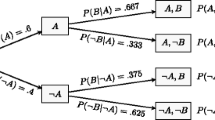Abstract
This paper presents an optimal estimator for uncertainty-based measurement quality control. The optimal estimator is developed based on an acceptance probability approach under a risk balance criterion. It yields a balance between the false acceptance and false rejection when the measurement quality index is equal to unity. This paper also presents a minimum mean absolute percentage error (MAPE) estimator and a minimum mean squared percentage error estimator based on the frequentist decision-theoretic approach. The mathematical formulations for computing the MAPE, relative bias error (RBE), relative precision error (RPE), and root mean squared percentage error (RMSPE) of the three presented estimators and five existing estimators are derived. The performance of these estimators are compared and evaluated in terms of the false acceptance/rejection probability, MAPE, RBE, RPE, and RMSPE. Among the eight estimators considered, the presented optimal estimator is the most meaningful and the best estimator from the measurement quality control perspective.






Similar content being viewed by others
References
Joint Committee for Guides in Metrology (JCGM) (2008) Evaluation of measurement data—guide to the expression of uncertainty in measurement (GUM 1995 with minor corrections). Sevres, France. http://www.bipm.org/utils/common/documents/jcgm/JCGM_100_2008_E.pdf
Ramsey MH, Ellison SLR (eds) (2007) Eurachem/EUROLAB/CITAC/Nordtest/AMC guide, measurement uncertainty arising from sampling: a guide to methods and approaches (1st edn). Eurachem ISBN 978 0 948926 26 6 available from the Eurachem secretariat. http://www.rsc.org/images/EURACHEM1_tcm18-102815.pdf
Huang H (2014) Uncertainty-based measurement quality control. Accred Qual Assur 19(2):65–73
Pendrill LR (2014) Using measurement uncertainty in decision-making & conformity assessment. Metrologia 51:S206. doi:10.1088/0026-1394/51/4/S206
Mueller DS, Wagner CR (2013) Measuring discharge with acoustic Doppler current profilers from a moving boat. Techniques and Methods 3A-22, Version 2.0, 75p, U.S. Geological Survey (USGS), Reston, VA
Oberg KA, Morlock SE, Caldwell WS (2005) Quality-assurance plan for discharge measurements using acoustic Doppler current profilers. Scientific Investigations Rep. 2005-5183, U.S. Geological Survey (USGS), Reston, VA
Huang H (2008) Estimating precision of moving boat ADCP discharge measurement. In: Proceedings (DVD) of 14th Australian hydrographers association conference: water initiatives 2008 and beyond. Australia Hydrographers Association, Northcote
Shcherbakov MV, Brebels A, Shcherbakova NL, Tyukov AP, Janovsky TA, Kamaev VA (2013) A survey of forecast error measures. World Applied Sciences Journal 24 (Information Technologies in Modern Industry, Education & Society):171–176. http://www.idosi.org/wasj/wasj(ITMIES)13/28.pdf
Hyndman RJ, Koehler AB (2006) Another look at measures of forecast accuracy. Int J Forecast 22(4):679–688
Grubbs FE, Weaver CL (1947) The best unbiased estimate of population standard deviation based on group ranges. J Am Stat Assoc 42(238):224–241
Stark H, Brankov JG (2004) Estimating the standard deviation from extreme Gaussian values. Signal Process Lett IEEE 11(3):320–322
Zhang H, Wang Z, Liu Z (2005) On the maximum residual by Monte Carlo simulation. J Phys Conf Ser 13:300–303. http://iopscience.iop.org/1742-6596/13/1/070
Willink R, White R (2011) Disentangling classical and Bayesian approaches to uncertainty analysis. Measurement Standards Laboratory, PO Box 31310, Lower Hutt 5040, New Zealand
Jenkins JD (2007) The student’s t-distribution uncovered. In: Measurement science conference proceedings, Long Beach
Huang H (2010) A paradox in measurement uncertainty analysis. Presented at the 2010 measurement science conference in Pasadena, CA, 25–26 March 2010. In: Global measurement: economy & technology, 1970–2010 proceedings (DVD)
Huang H (2012) Comparison of uncertainty calculation models. Cal Lab Int J Metrol 19(1):24–29
Wadsworth HM Jr (1989) Summarization and interpretation of data. In: Wadsworth HM Jr (ed) Handbook of statistical methods for engineers and scientists. McGRAW-Hill, New York, pp 2.1–2.21
Bernardo JM (2006) Intrinsic point estimation of the normal variance. In: Upadhyay SK, Singh U, Dey DK (eds) Bayesian statistics and its Applications. Anamaya Pub, New Delhi, pp 110–121
Student (1908) The probable error of a mean. Biometrika VI:1–25
Shewhart WA (1926) Correction of data for errors of averages obtained from small samples. Bell Syst Tech J 5(2):308–319
Wicklin R (2011) On the median of the Chi square distribution. http://blogs.sas.com/content/iml/2011/11/09/on-the-median-of-the-Chi-square-distribution/
Acknowledgments
The author would like to thank the anonymous reviewers for their helpful comments.
Author information
Authors and Affiliations
Corresponding author
Appendices
Appendix 1: Solution to the integrals in Eq. (11)
Equation (11) is rewritten here
Rearranging the integrals in Eq. (31) yields
where \( {\rm P}(\frac{k}{2},\frac{{a^{2} }}{2}) \) is the regularized Gamma function with k degrees of freedom. Note that \( \int\limits_{0}^{\infty } {x\,f(x,k){\text{d}}x} = c_{4} \sqrt {n - 1} \), which is the mean of the Chi distribution with k degrees of freedom. After some algebraic manipulation, Eq. (32) can be written as
The probability density function f(x, k) is written as
where Г(.) stands for the Gamma function. xf(k, x) is then written as
On the other hand, f(x, k + 1) can be written as
Substituting Eq. (36) into Eq. (35) and after some algebraic manipulation, xf(k, x) becomes
The fourth term in Eq. (33) then becomes
where \( {\rm P}(\frac{k + 1}{2},\frac{{a^{2} }}{2}) \) is the regularized Gamma function with k + 1 degrees of freedom. Substituting Eq. (38) into Eq. (33) yields Eq. (12).
Appendix 2: Solution to the integral in Eq. (20)
Equation (20) is rewritten here
Equation (39) can be rewritten as
The first integral in Eq. (40) is equal to 1. The second term in Eq. (40) can be written as (replacing a with ∞ in Eq. (38))
The integral of x 2 f(k, x) in Eq. (40) can be resolved in a similar way as that for solving the integral of xf(k, x). First, write x 2 f(k, x) as
Second, write f(x, k + 2) as
Then, substitute Eq. (43) into Eq. (42). After some algebraic manipulation, x 2 f(k, x) becomes
The third term in Eq. (40) then becomes
Substituting Eqs. (41) and (45) into Eq. (40) yields \( {{MSPE}} = 1 - 2{\kern 1pt} c_{4} C + C^{2} \).
Rights and permissions
About this article
Cite this article
Huang, H. Optimal estimator for uncertainty-based measurement quality control. Accred Qual Assur 20, 97–106 (2015). https://doi.org/10.1007/s00769-015-1111-x
Received:
Accepted:
Published:
Issue Date:
DOI: https://doi.org/10.1007/s00769-015-1111-x




